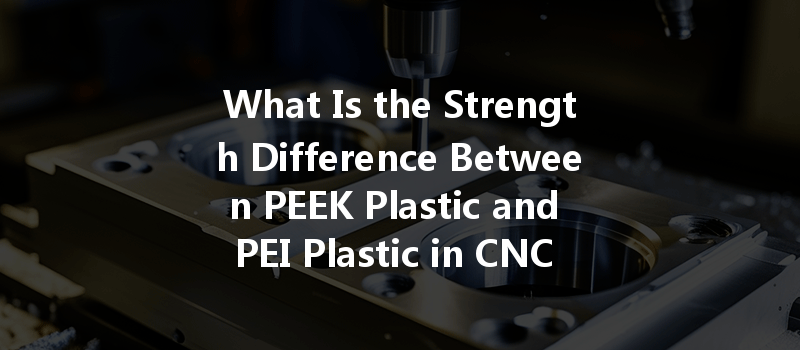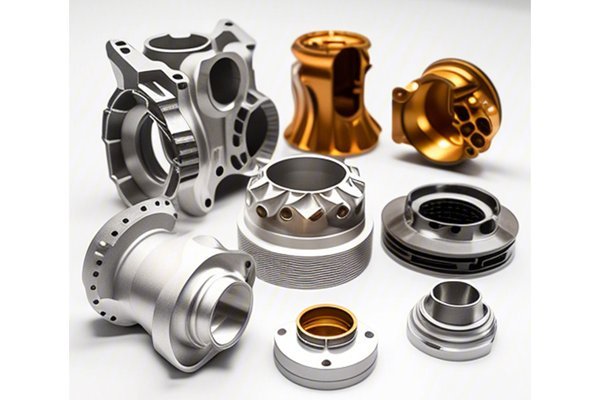Opening
Did you know that PEEK (Polyether Ether Ketone) and PEI (Polyether Imide) plastics are regarded as two of the most advanced engineering materials available for CNC machining? In industries ranging from aerospace to medical equipment, the choice between these two high-performance plastics can significantly impact the performance and reliability of components. But what sets them apart when it comes to strength, and how do these differences influence their application in CNC machining? This blog will delve deep into the intricacies of both materials, shedding light on their respective strengths and weaknesses, and offering insights to help engineers and manufacturers make informed choices.
Understanding PEEK and PEI
What is PEEK?
PEEK is a semi-crystalline engineering thermoplastic known for its resilience, chemical resistance, and excellent mechanical properties. It boasts a high glass transition temperature (around 143°C or 289°F) and can maintain its properties in high temperatures, making it suitable for use in demanding environments. PEEK’s tensile strength ranges from 90 to 100 MPa, depending on the grade and processing methods used. Its superior wear resistance and low friction coefficient make it a prime choice for components subjected to mechanical stress.
What is PEI?
PEI, on the other hand, is an amorphous thermoplastic with an exceptional dimensional stability and high strength. With a glass transition temperature of around 217°C (423°F), it offers remarkable heat resistance and is often utilized in applications that require extensive thermal stability. PEI typically boasts a tensile strength of 70 to 85 MPa, which while slightly lower than PEEK, is still impressive for a thermoplastic. Furthermore, PEI has excellent electrical insulation properties, making it a suitable option for electrical and electronic applications.
Comparing the Strengths of PEEK and PEI in CNC Machining
In CNC machining, the strength of a material can be evaluated through various parameters, including tensile strength, compressive strength, impact resistance, and flexural modulus.
Tensile Strength and Modulus
Compressive Strength
Both materials exhibit excellent compressive strength, but PEEK may have a slight advantage due to its crystalline structure, which allows it to withstand higher loads without deforming. Generally, compressive strength can be difficult to measure definitively as it often depends on the specific configuration and loading conditions of the part being machined.
Impact Resistance
In terms of impact resistance, PEEK plastics will generally outperform PEI, making it suitable for applications that entail sudden shocks or loads. This property is particularly crucial in aerospace components or machinery exposed to high-stress conditions over prolonged periods.
Flexural Strength
Flexural strength is another critical factor to consider. PEEK boasts a higher flexural modulus, allowing components made from PEEK to maintain shape under stress. Conversely, while PEI has a lower flexural modulus, it has a tendency to be more flexible which might be advantageous in specific applications that require bending rather than breaking.
Factors Influencing Selection Between PEEK and PEI
Understanding the differences in strength alone isn’t enough to choose the best material for CNC machining; several other factors must be taken into account.
Temperature Resistance
As mentioned, PEEK can handle higher temperatures compared to PEI. This becomes crucial in applications that require exposure to thermal cycling. PEEK remains stable at higher temperatures, whereas prolonged exposure to temperatures beyond PEI’s threshold can compromise its structural integrity.

Chemical Resistance
Both materials exhibit impressive chemical resistance. However, PEEK shows superior performance against a wider range of corrosive substances. On the other hand, PEI is still effective against most common solvents and has a good overall resistance profile.
Machinability and Surface Finish
PEI tends to offer better machinability compared to PEEK. Operators often find it easier to attain a superior surface finish when machining PEI, whereas PEEK may require additional tools or processing adjustments to achieve the same quality.
Cost Considerations
The cost of these advanced materials can vary considerably, with PEEK typically pricing higher than PEI. Budget constraints may play a significant role in determining which material is appropriate for a given application.
Applications of PEEK and PEI in CNC Machining
PEEK Applications
PEI Applications
In summary, both PEEK and PEI are exceptional materials with distinct strengths that allow them to excel in various CNC machining applications. PEEK boasts superior tensile strength, impact resistance, and thermal stability, making it ideal for high-stress environments. On the other hand, PEI offers excellent machinability, flexibility, and cost-effectiveness, catering to diverse applications in the electrical sector and 3D printing.
The choice between PEEK and PEI ultimately depends on specific application requirements, including strength, temperature resistance, chemical exposure, and overall budget considerations.
Understanding these materials’ strengths and defining their applications are vital for engineers, manufacturers, and product designers alike. The right choice can lead to improved performance, increased durability, and long-term cost savings. As we continue to innovate in manufacturing and materials technology, considering these factors will be crucial to harnessing the full potential of advanced engineering materials in CNC machining.
In the world of CNC machining, knowledge is power. Armed with a deep understanding of PEEK and PEI, manufacturers can enhance their production processes, ensure product quality, and ultimately create more robust and reliable components for their industries.



